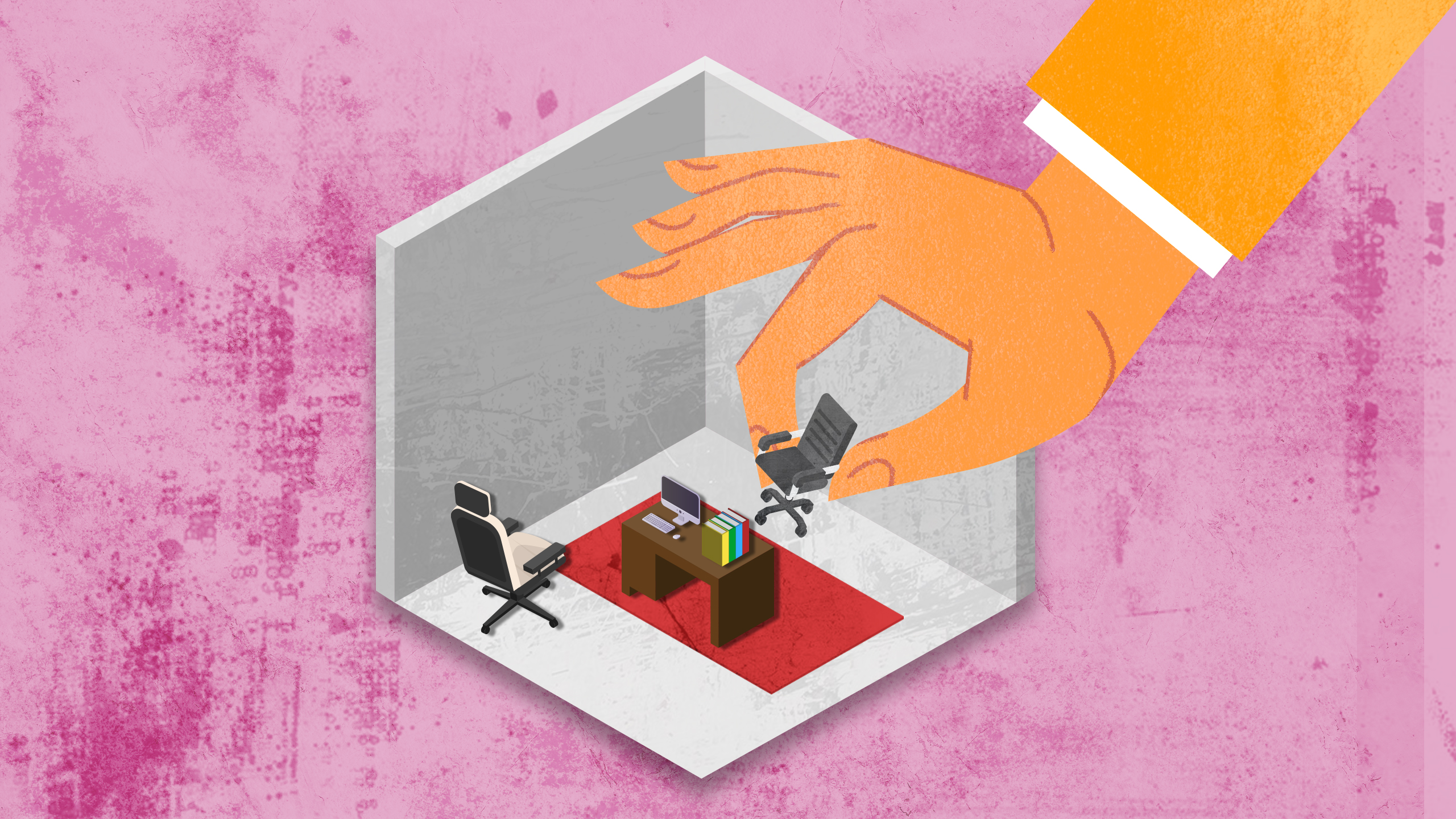
9 Easy Ways You Can Design Your Home Office for Maximum Productivity with No Stress!
What does the perfect at-home workspace look like to you?
Some might say they work best with some steady focus music playing in the background, while others might swear by the productivity boost they receive from working at a standing desk. Some might even steadfastly defend their own clutter, claiming they need the comfort of their messy workspace to effectively accomplish their work.
In any case, there’s no shying away from the fact that remote work has become the new norm. Even if you only work from home a few days out of the month, you know the importance of having a workspace that increases your productivity and reduces stress. You want to be focused but not stressed out, and you want to be comfortable but not so comfortable that you don’t get any work done. Designing a home workspace can prove to be a delicate balancing act.
That’s precisely why we’re here! If you’re in need of a few tips on how to maximize your productivity when you work from home, you’re in for a treat. In this article, we provide nine easy ways you can design your home office to increase productivity and remain stress-free. Let’s jump in!
First Thing First: Assess Your Needs
Before you start picturing which colors to repaint your home office with and the perfect bookcase for your personal library, it’s important that you assess exactly what you need out of your home office space. Every person is different, so do your best to remain unbiased and avoid modeling your office after a pretty picture you saw on Pinterest. The most important thing to do when designing your home office is to understand your particular needs for productivity.
What Are Your Constraints?
If you don’t take into account the actual amount of physical space you have to set up your home office, you’ll be cramming things into your space and cluttering up your office before you even begin. Pick a space in your house that may serve as your headquarters where you’ll have easy access to all necessary tools and resources.
When planning a workplace, most designers recommend allocating at least 60 inches (150 centimeters) in width and 84 inches (210 centimeters) in depth. Your ideal space might not be as big as you can imagine, but with some creativity and planning, you can create a space big enough to suit your needs. How much room do you need to pull out the chair? Can you go about your regular day comfortably?
If you are a creator who uses their home office as a workshop, you may require even more square footage. Think beyond the box and make use of unused areas like the attic, the basement, the shed, the coach house, or even the formal dining room. You could even take over the guest bedroom and add a Murphy bed to create a multi-functional workspace.
Know Your Budget
Physical constraints are not the only thing to take into account. In addition to understanding how much physical space you have to create your workspace, you also need to know how much everything will cost and how much you can comfortably spend.
From thrifting used items to DIY-building your own standing desk, there are an endless number of ways to stretch your design budget, but it’s vital you understand what you’re working with up front. Consider the following costs when planning your ideal home office workspace:
- Paint supplies and construction materials
- Cost of hiring professionals (electricians to put in additional outlets)
- Any furniture or decor you will purchase
- Any additional tech or ergonomic supports you will need
Join In 200 Million+ On The Journey to Greatness
1. Keep It Separate
Make sure that your home office is in a separate area from the rest of your home. There are two reasons why this is significant. For one, it prepares your mind to switch gears from “home” to “work” when the workday begins and vice versa when it’s time to wind down. You don’t want to begin your work day while you’re in “lounge” mode, and you don’t want to try to wind down after a long day while you’re still in productive mode.
Second, having everything in its own space will make it easier to keep things in order and reduce the need for daily cleaning and reorganization. It’s also important to remember that a private office doesn’t have to be in a completely different room. A home office doesn’t even need to take up an entire room. Many individuals work effectively from a designated chair at the dining table; just make sure to clear it up before you use it again for other purposes.
Once you’ve decided on a specific room for your office, you should keep it that way. Unless absolutely necessary, you should avoid changing which room your office is in. When you’ve been working in the same place for a while, it’s easier to switch into work mode when you need to.
2. Keep It Clean (Reduce Distractions)
If you think your special brand of clutter and mess is beneficial to your productivity, spoiler alert — it probably isn’t. The fact of the matter is that clutter does nothing good for anyone’s ability to focus and remain productive. In fact, the specific space you choose to set up as your home office matters far less than the conscious choices you make when deciding what to put in it.
Everyone is different. Some enjoy having background noise, like having a television on or the windows open so that you can hear birds outside. You know yourself better than anyone and therefore know what does and does not distract you. Some individuals cannot even have their desks facing an open window as they would be tempted to stare outside all day instead of getting work done.
Wherever you decide to set up your home office, make sure you choose a space that is free of things that will distract you from your work.
3. Go Green and Bring the Outdoors In
When picking the decoration for your home office, you should choose décor that relaxes you but also encourages you to be productive. One Norwegian study indicated that having plants and flowers on one’s desk increased one’s ability to concentrate and improved one’s productivity.
While the exact causes and effects of this phenomenon are still up for debate, one theory suggests that it has to do with the fact that objects from nature can provide a momentary diversion from one’s job without completely pulling one’s attention away from it.
Having a plant on your desk or elsewhere in the room has been shown to boost mental health and is essential to running an efficient home office, but the mechanisms by which this occurs remain unknown. Just make sure the plants stay healthy, as a withering or dead plant could be a more noticeable interruption.
Orange You Glad You Can Work from Home?
According to the ancient principles of Feng Shui, orange is considered the color of focus, productivity, and organization. In fact, Feng Shui principles even maintain that the brighter the hue of orange, the better.
If the thought of an entirely orange room makes you feel like you’re cosplaying as a Denver Broncos fan, that’s okay! You don’t need to paint the entire room orange, and you certainly don’t need to hang up orange jerseys on the walls. Just incorporating a bit of orange into your space, such as an orange lamp or vase, can trick your brain into staying focused and remaining productive.
4. Give Yourself Ample Storage
A well-designed home office should have plenty of space to store things. You still need a tidy place to store paperwork, office supplies, and the like, even if the bulk of your job is done on a computer. If you want to avoid the negative effects of a cluttered home office on your productivity, it’s important to provide yourself with enough storage space. This might be in the form of a filing cabinet, a chest of drawers, or a number of other options.
If you don’t want mental tension and interruptions to your work, you need to take care of the mess before it becomes overwhelming. Even if you consider yourself a neat and tidy worker, if you don’t have enough space to store your things, it’s only a matter of time before your entire workspace becomes cluttered.
5. Adequate Lighting
Something you may not have considered when designing your home office is the lighting. Avoid squinting by not looking over the lighting in your home office; this applies to both aesthetics and the ability to actually see what you’re working on.
Pay close attention to the lighting of your home office, concentrating on the spots where you’ll need to see the most. Lamps on the floor can be used to great effect in the absence of overhead lighting. To further enhance the overall brightness of your primary working area, place a table lamp on your desk. Even if you prefer warmer lighting, such as yellow bulbs, research suggests that “cool” light (white bulbs) is better for clarity of mind and remaining focused.
6. Prioritize Your Comfort
Having a comfortable home office can increase efficiency since workers will spend less time distracted by discomfort and more time focusing on the tasks at hand. Think about it — the more comfortable you are, the less likely you are to shift around and get up from your desk.
For both your health and productivity, it’s crucial that you have a suitable chair to use at work, preferably one that is ergonomic and won’t cause you long-term back problems. Another alternative that could help with comfort and posture is using a standing desk setup with a rubber foot mat.
7. Pay Attention to the Temperature
Working in an uncomfortable environment, whether it be too hot or too cold, is a sure way to lose focus. Therefore, it’s crucial that you do everything in your power to maintain a workplace temperature that’s comfortable for you.
Despite the fact that you may not be able to adjust the temperature of the room directly, there are still measures you may take to make it more comfortable. Keep a space heater nearby and a sweater or blanket draped over your chair if the room is chilly. Place a fan near your work area and drink lots of cold water if the room temperature is high. Maintaining a steady core temperature in your home workspace is also a great way to ease tension and improve concentration.
It’s important to make your home office somewhere you’re happy to spend time on a daily basis. You have the ability to customize your home office however you want, unlike a traditional office building, so you should do your best to create one that suits all of your needs. It will be much easier to slip into work mode if you’re comfortable.
8. Stay on Track
Maintaining productivity when working from home needs more than just a clutter-free workspace; it needs careful planning. Many people find that having a visual representation of their to-do list is an indispensable aid in monitoring their progress and ensuring that everything gets done.
Keeping your chores in sight is helpful, even if you use an app to keep track of them. You can either use a desk calendar to list your daily tasks or a wall calendar to keep track of your commitments. If your workday has no set beginning or end, using a to-do list can help you stay on top of everything you need to get done while also reducing the likelihood that you’ll forget something important.
9. Raise the Roof
Obviously, you cannot renovate your entire house to accommodate your home workspace. However, if you’re able, choosing a room with high ceilings may prove to be beneficial to your focus and productivity. Multiple experiments showed that when participants were given high ceilings to work in, they tended to think more freely, creatively, and abstractly. When given low ceilings, participants’ thinking tended to be more confined.
Stress-Free and Productive at Your Ideal Work-From-Home Office
There’s so much more that goes into creating your ideal home office, but you now have the guidance you need to get started. Keep in mind that every individual is different, so your specific needs may differ from someone else’s. Among the most important aspects of this process is understanding what you need to excel and remain productive. Once you understand what you need, you’re on your way to reducing stress and maximizing your productivity!
Greatness Authors
Greatness Authors is a collection of writers, thinkers, curiosity experts, and students of the world who are committed to bringing you the most up-to-date, impactful, and inspiring information surrounding Greatness topics.

Redefining Poetry: How Instagram Sensation Rupi Kaur Showed That Poetry Is for Everyone

The Young Professional’s Guide to Advocating for Yourself at Work & Setting Healthy Boundaries

Olympian Yusra Mardini’s Incredible Story of Resilience, Rescue, and Refugee Rights

A Beginner’s Guide to Effortlessly Attracting Money and Growth Opportunities

Psychologist Edith Eger’s Inspirational Journey to Find Forgiveness and What It Means for You










